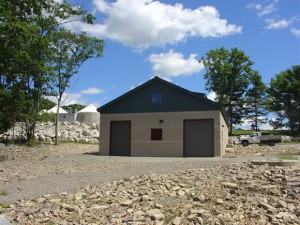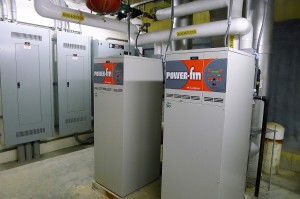Infrastructure
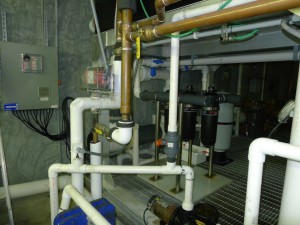 RAS Recirculating Aquaculture Systems
RAS Recirculating Aquaculture Systems
RAS is at the core of what the Center has to offer. With RAS we reduce our dependence on external water supplies and minimize our environmental footprint. Our multiple RAS give us the technology and means to hold a diversity of marine species. Water chemistry, temperature, photoperiod and special rearing requirements can be optimized for healthy growth. Our approach to RAS technology favors moving bed biofilters that reduce pumping costs and increase efficiency. We are continuously improving our RAS technology, and we welcome innovations that lead to technology transfer to the Center and our clients.
Water supplies and storage
Seawater is continuously pumped from Taunton Bay and filtered through large sand filters before passing through a U.V. sterilizer to the storage reservoirs. Fresh and brackish water comes from a number of wells on site. Three insulated storage reservoirs distribute the water by gravity feed to rearing facilities on both the CCAR and USDA campuses. The intake and discharge lines, pump house and reservoirs were newly installed in 2005 along with the USDA NCWMAC. The two facilities are permitted through Maine DEP to discharge up to 1.27 million gallons per day into Taunton bay.
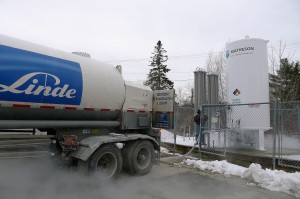 Oxygen
Oxygen
Liquid oxygen stored in a bulk tank is piped to every tank facility on site. In most systems, it is the final backup in the event of pump failure or complete power loss.
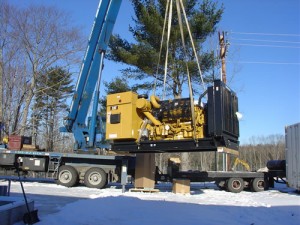 Generators
Generators
In the event of a power outage, we must have power to the life support systems. We have three back up generators for this purpose. The two original gensets are 234 KW and the newer unit, shown here during installation in 2005, is 650 KW. These provide 100% automatic backup power for the entire site.
Propane or oil furnaces and boilers provide heat for our various buildings and aquaculture systems. These are complemented by chillers ranging in capacity from portable to 120 tons of cooling capacity. Heat exchangers equipped with electronic controls are a component of every culture system, allowing the facility to rear everything from warm water clown fish to cold water halibut.

